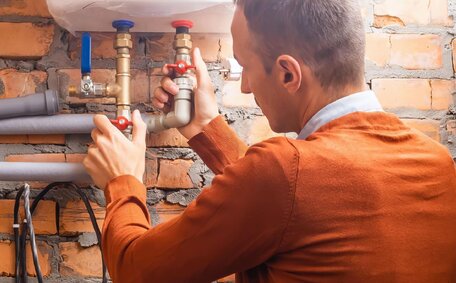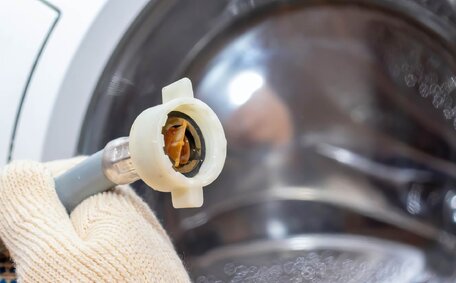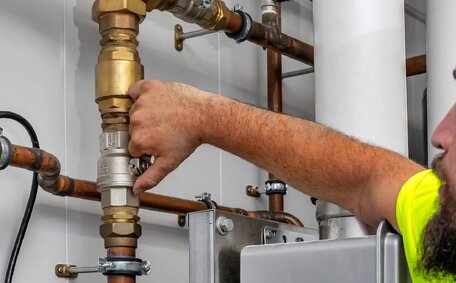Can I Use My Gas Stove During A Power Outage?
Using a gas stove safely during a power outage requires strict adherence to safety precautions. Modern gas stoves have additional features like electronic ignition that need electricity, so older models are more likely to work during power outages. Consult your stove’s manual for correct lighting instructions.
The main risk is gas leaking and a potential fire or carbon monoxide poisoning if not properly handled. You can light gas stoves with manual ignition using matches or a lighter. Make sure burners are turned off completely when not in use.
It is essential to ensure adequate ventilation.
Some tips for using a gas stove safely during a power outage:
- Ensure your gas supply is active. If unsure, contact your utility company.
- Review your manual for proper startup without electricity.
- In case power interruptions occur, ensure windows and doors are open for ample ventilation.
- Start by turning a burner knob slowly to ignite each burner individually.
- Have a flashlight ready to help you see the controls.
- Keep flames and sparks away from the stove, especially during outages.
- Turn off all burners when not cooking.
- You would need to check the connections for leaks using soapy water.
- Monitor your carbon monoxide detector.
Although gas stoves may function during power disruptions, ovens and other appliances such as water heaters likely won’t. Prepare alternative cooking methods and operate gas appliances in well-ventilated areas to avoid hazards. Seek professional help if you’re uncertain about safe operation.
The Role Of The Interlock Safety Feature
Modern gas stoves include an interlock safety feature to prevent gas leaks and accidental carbon monoxide (CO) poisoning, as it needs electricity to work. This feature is designed to rely electricity to regulate gas flow to the light surface burners.
To ensure safety, the interlock is designed to cease the gas supply’s work once power is cut. This is because the electronic ignition systems create spark in the burners to light, which requires electricity. Without power, the burners cannot ignite, so gas flow is stopped.
Older gas stove models with pilot lights are designed to function without this interlock. These stoves can lit with just a match during an outage. During power outages, attempting to bypass the interlock on modern stoves by lighting with a match can lead to dangerous gas buildup.
The interlock system is a crucial safeguard against the accumulation and ignition of unused gas. Manually overriding it can put you and your family at risk of fire or carbon monoxide poisoning if gas leaks go unnoticed.
If your stove has an interlock feature, it’s advisable to seek professional service rather than attempting to light it yourself during an outage. The manual should indicate if your model has this feature. Using your fireplace stove or an outdoor grill is a safer alternative when cooking outside during a power outage.
Contact the manufacturer if uncertain.
The interlock provides peace of mind that gas will not leak from the stove when electricity is cut. While inconvenient in an outage, it performs an important function. When power restored, ensure all burners are off before the interlock reconnects the gas supply to prevent mishaps.
Manually Lighting An Older Model Gas Stove
Lighting an older model gas stove during a power outage necessitates cautious handling. Follow these steps to safely light your stove manually during a power outage:
- Make sure the gas supply is on and ready to light gas burners. Examine some gas appliances around the house to confirm.
- Open doors and windows in the kitchen for ventilation.
- Locate the igniter button or dial. Most are near the burner knobs.
- Ensure all knobs are in the off position by giving each a cautious turn knob before beginning.
- Use a long match or BBQ lighter when lighting.
- Gently twist the knob low as you begin to light the burner.
- Hold lighted match at the burner head while carefully pushing the igniter button. This will release gas.
- Hold the match steadily until the burner ignites and the flame stabilises.
- Once lit, adjust heat as necessary. Use a low to medium setting.
- Light other burners individually using the same method.
- Never leave burners unattended. Turn off completely after cooking.
- Check for leaks using soapy water to bubble test connections.
- It is advisable not to use the oven portion of your stove without power. This requires prolonged ventilation.
Older gas stoves can be used safely during outages with proper precautions. Keep flashlights, matches, and a carbon monoxide detector on hand for emergencies.
It’s essential to always keep mind the warning signs of improper gas stove operation and act accordingly. If in doubt, seek professional help.
Alternative Cooking Options Without Power
When the power goes out, there are several excellent alternatives to your gas stove for cooking. Here are some safe methods for cooking without electricity:
Outdoor Grilling
Outdoor grills and heaters powered by propane, charcoal, or natural gas are suitable for cooking. Due to carbon monoxide dangers, never use a grill indoors. Keep the grill away from structures and have proper ventilation.
Camp Stoves
Portable camping stoves, including those with dual fuel capabilities, that run on canister propane are a compact option to heat your meals or provide hot water. Operate them on flat, stable surfaces away from flammable materials.
Sterno Stoves
Sterno, a jellied fuel, can also be used for warming food outdoors or indoors in chafing dishes. Sterno stoves designed for tabletop use with pots and pans are available. Use only with proper ventilation.
Fire Pits
Constructing a fire pit or using a portable one can provide a heat source for grilling food or boiling water over a grill grate. Keep fires small and contained. Extinguish fully after use.
Fondue Pots
Tabletop fondue pots heated with gelled fuel can cook bite-sized foods like meat, vegetables, and bread. Supervise children around open flames.
Food Thermos
A wide-mouth thermos can keep water hot for coffee, oatmeal, soups, etc. Prepare boiling water while you still have gas or electricity.
Cold Foods
Having a freezer can be supplemented with coolers stocked with cold food like sandwiches, cheese, fruits and vegetables to help get you through mealtimes without power.
Despite gas stoves potentially being inoperable during outages, other safe cooking methods to prepare hot food exist, in contrast to gas water heaters which may not function. The key is proper ventilation of alternative heat sources and avoiding any sparks or risks.
Preventing Carbon Monoxide Poisoning
Using gas appliances without electricity requires strict precautions to prevent carbon monoxide poisoning. CO is an odourless, colourless gas that can be fatal if inhaled.
When operating your gas stove manually during an outage, always use windows and exhaust fans to ensure proper ventilation. Avoid blocking fresh air intakes or using a stove in an enclosed area. Watch for signs of CO buildup like headaches, nausea, or dizziness.
Ensure you have quality CO detectors with battery backup near sleeping areas and the kitchen. Check or replace the batteries every 6 months. Detectors should beep if CO concentrations rise above safe levels.
Avoid using gas ovens, grills, or camp stoves indoors during power outages, as they require adequate ventilation. Be aware that gas appliances like water heaters and clothes dryers also pose a risk if used improperly without electricity.
If you suspect a gas leak, immediately contact your gas company or a professional. Warning signs include the smell of rotten eggs, a deceased pilot light, hissing noises, yellow burner flames, or soot buildup.
By being vigilant and taking the right precautions, you can safely cook on a gas stove during a power outage. Always prioritize safety if you detect gas or suspect an appliance is malfunctioning. Preventing CO poisoning should be the top concern when utilising gas without electricity.
When To Call A Professional
Operating gas appliances without power entails risks, particularly if you’re unsure of the correct procedures. Rather than take chances, a professional assessment can provide peace of mind.
Contact Saint Marys Plumbing if your gas stove fails to operate normally after an outage. Technicians can inspect for faulty valves, igniters or leaks. They have the expertise to get appliances working safely again.
Likewise, Call 1300 349 338 if other gas appliances like ovens or your water heater malfunction due to a gas valve issue after trying to work without electricity. Professionals can diagnose issues and make repairs.
Don’t attempt gas system repairs yourself unless qualified. Defective appliances can leak gas or carbon monoxide, posing much more of a threat to your household’s safety.
For new installations or replacements, including tankless water heaters, get in touch with your local experts at Saint Marys Plumbing, serving Saint Marys and Sydney areas. Their qualified technicians offer reliable gas services to keep your appliances running efficiently.
Instead of risking safety with gas systems during outages, rely on the expertise of Saint Marys Plumbing. To schedule inspections or inquire about tankless water heater solutions, contact Saint Marys Plumbing at 1300 349 338 or email [email protected]. Note that our website uses cookies to improve your experience. Saint Marys Plumbing is dedicated to ensuring the safety of your home.






